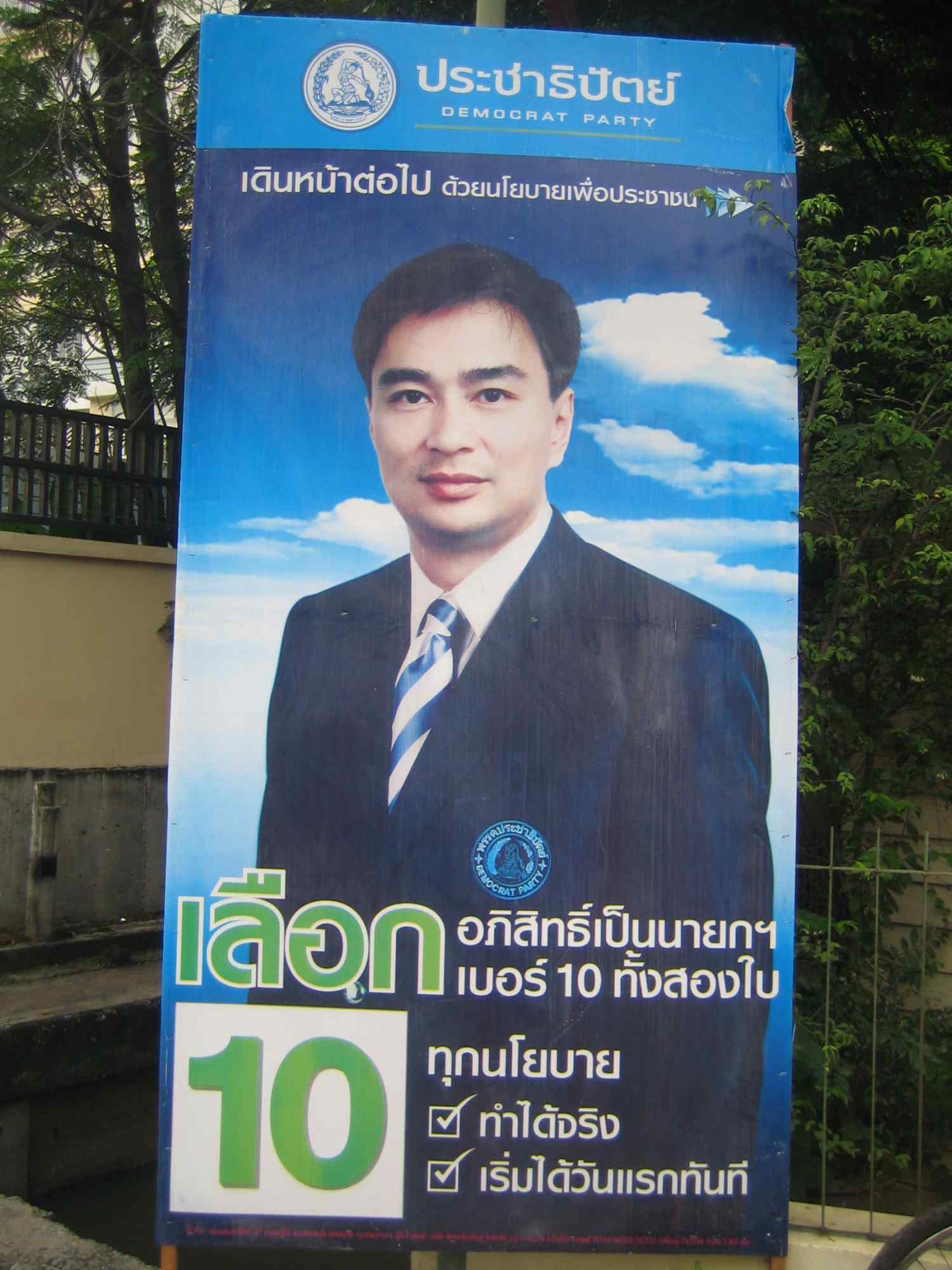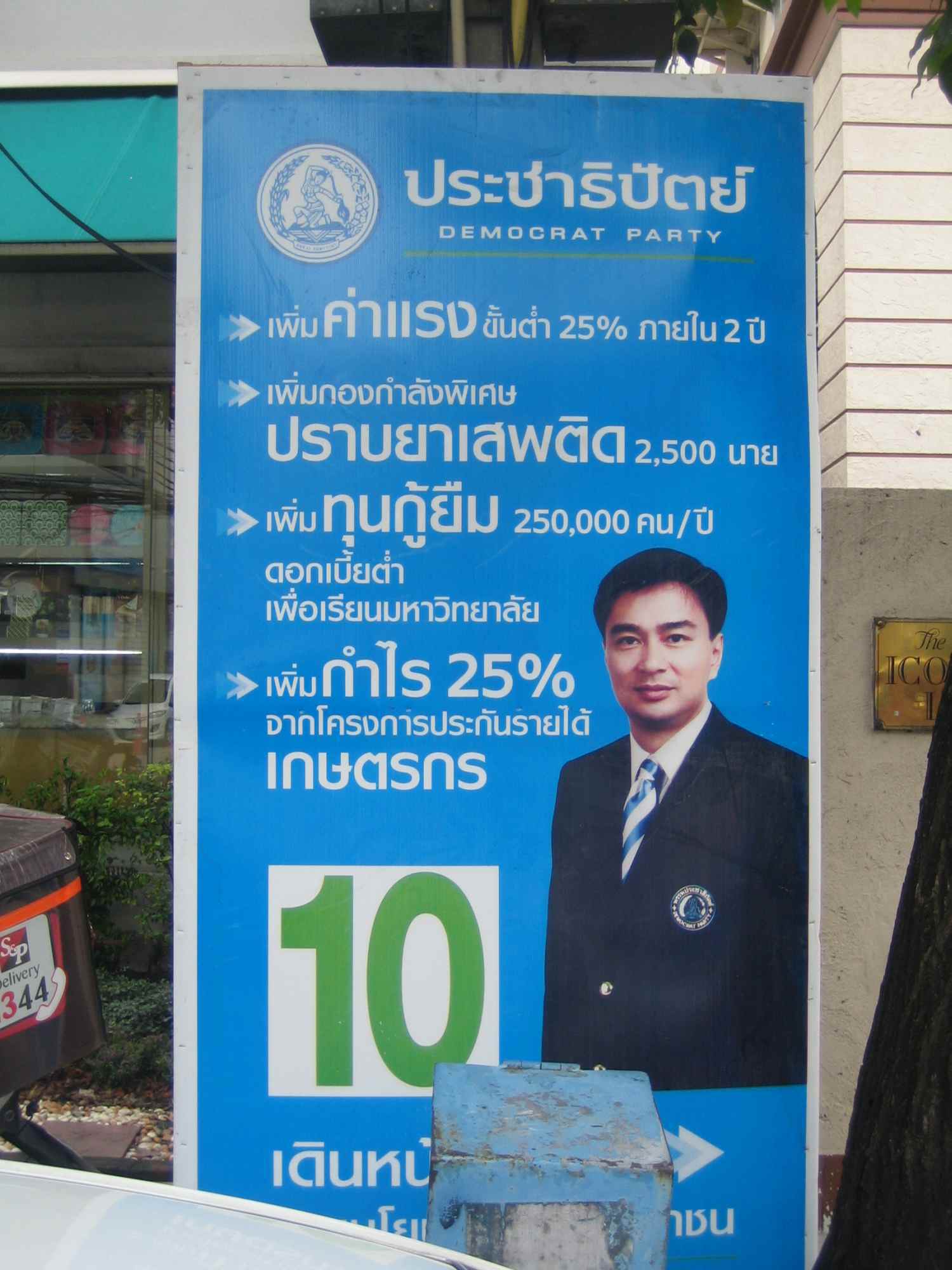Over the past week, new posters of Abhisit have appeared on the streets in Bangkok
The picture takes up almost the full height of the poster. In ad terms, this design is “product as hero,” best exemplified by bottle shots for upscale liquor.
As befits a hero, he looks his handsome self. But this has been achieved at a cost. Close-up it is evident that the shot has been extensively retouched. The chin (the second one) has been faded away, and the hairline brought forward. As the printing is also not very high-resolution, the end result is rather flat and lacking in character. His expression is neither smiling nor serious nor anything. He eyes do not quite meet ours. He looks a little worried. Although the face is the most dominant element in the poster, somehow he seems very far away.
The propping is very conservative. He wears a plain white shirt, a tie in the party colors, and no insignia. The most striking and communicative element besides the face is the blazer with a party crest on the pocket. Now, blazers are rather rare in Thailand. They are worn mainly by officials, especially on the ritual occasions (anniversaries, royal celebrations, etc.) which are a significant part of their lives. The blazer presents Abhisit as belonging to the old bureaucrat culture.
His pose is glacially still. In fact, this reflects the man. When he appears talking in public, his body is almost static with only his mouth moving, rather like a puppet. In old Thai culture, the ability to achieve this bodily stillness was considered positive, conveying self-control, self-effacement, and deference. He looks like an official waiting politely with body still and eyes slightly averted to receive a command.
The background of a bright sky lends an upbeat tone to the poster, but also emphasizes the dark, heavy, static character of Abhisit himself.
Although the overall design should present the leader as hero, the poster has been crowded with messages which rather ruin the effect. There is the party name in both Thai and English, a slogan (“move ahead with policies for the people”), a large order to ELECT, which seems superfluous, and two check-boxes which claim the Democrats will “really” implement their policies from day one.
This shot is clearly considered a key part of the campaign as it is being used in other ways. It appears on another poster along with four key campaign pledges: increase in minimum wage; more anti-drug police; higher profit from the crop insurance scheme; and more student loans. With the shot now not crowded by copy, the blazer is even more prominent.
The head part of the shot is also being dropped into candidate posters. But so much detail is lost, that Abhisit looks almost one-dimensional and unbelievably young. Also his eyes seem even more reluctant to meet ours.
[For Chris Baker’s treatment of “Yingluck on the streets” see this post.]
 Facebook
Facebook  Twitter
Twitter  Soundcloud
Soundcloud  Youtube
Youtube  Rss
Rss 

